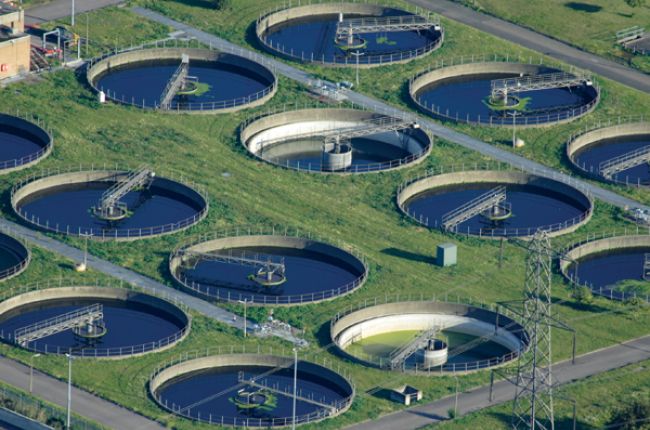Economical Solutions for Large-Scale Waste Water Treatment Facilities
Economical Solutions for Large-Scale Waste Water Treatment Facilities
Blog Article
Strategic Approaches to Boost Drainage Treatment Effectiveness and Reduce Ecological Impact
In the world of waste water therapy, the mission for enhanced performance and minimized environmental effect is a continuous difficulty that demands critical options. The assimilation of sophisticated therapy innovations, energy-efficient procedures, resource recovery approaches, improved nutrient removal methods, and wise tracking and control systems represents a diverse framework for resolving these pressing issues.
Advanced Treatment Technologies
Sophisticated membrane filtration systems have actually transformed innovative wastewater treatment processes, dramatically enhancing the elimination of contaminants. These innovative systems operate forcibly water through a semi-permeable membrane layer, effectively separating contaminations from the water stream. The membrane layer's tiny pores catch pollutants such as germs, infections, and suspended solids, permitting only cleansed water to travel through. This technology has shown to be very efficient in eliminating a large range of impurities, including pharmaceuticals, heavy metals, and natural substances, which are commonly testing to remove via traditional therapy approaches.
In addition, membrane layer purification systems supply countless benefits over traditional treatment techniques. They need less space, generate higher-quality effluent, and are more immune to changes in influent water high quality. Additionally, these systems are very flexible and can be easily integrated right into existing therapy plants or utilized as standalone devices for decentralized applications. As the need for clean water remains to climb, the fostering of advanced membrane filtration modern technologies is necessary to ensure effective and lasting wastewater therapy practices.
Energy-Efficient Processes
The combination of energy-efficient procedures in wastewater therapy systems is essential for maximizing source utilization and minimizing functional prices. One key method to improving power performance in wastewater therapy is the use of advanced aeration systems, such as fine bubble diffusers or surface aerators, which can enhance oxygen transfer effectiveness and reduce energy usage.
Moreover, maximizing procedure control and automation via making use of sophisticated sensors and checking systems can boost total energy effectiveness by changing operations in real-time based on actual demand and problems. Applying power audits and regularly monitoring power performance indicators are essential practices to recognize locations for enhancement and track energy-saving campaigns effectively. On the whole, the fostering of energy-efficient procedures in wastewater treatment not only profits the setting yet likewise contributes to long-lasting expense savings and operational sustainability.
Source Recuperation Methods
With an emphasis on enhancing resource utilization and sustainability in wastewater therapy systems, the application of resource recuperation approaches emerges as a critical aspect in enhancing functional effectiveness. Resource recuperation approaches in wastewater treatment involve the identification and removal of useful resources from the waste stream, therefore transforming what was as site here soon as thought about waste right into a useful asset. By applying source healing strategies such as nutrient removal and recuperation, power generation from natural issue, and the production of multiple-use water, wastewater treatment plants can decrease environmental impact while taking full advantage of efficiency.

Improved Nutrient Removal Techniques
Executing innovative nutrient removal strategies is necessary for enhancing the efficiency of wastewater therapy systems. One of the essential strategies utilized for boosted nutrient elimination is the procedure of biological nutrient removal (BNR), which includes the removal of nitrogen and phosphorus via organic processes.

In enhancement to BNR, advanced treatment techniques i loved this such as membrane layer bioreactors (MBRs) and created wetlands can likewise be used to enhance nutrient elimination performance. MBRs utilize membranes to attain premium effluent requirements by efficiently eliminating nutrients and put on hold solids. Created wetlands imitate natural marsh processes to eliminate nutrients with plant uptake, microbial task, and sedimentation. By including these advanced nutrient elimination strategies right into wastewater treatment municipalities, markets and systems can properly reduce nutrient pollution and safeguard the atmosphere.
Smart Surveillance and Control Equipment
Using innovative innovation, the combination of clever tracking and control systems changes the operational efficiency of wastewater therapy facilities. These systems include sophisticated sensors and information analytics to constantly keep track of key specifications such as pH levels, turbidity, liquified oxygen, and flow prices in real-time. By gathering and evaluating this information, operators can gain beneficial insights right into the performance of the therapy processes, enabling positive adjustments to enhance treatment effectiveness.
Smart surveillance and control systems likewise sustain remote tracking capacities, allowing drivers to access real-time information and control functions from off-site areas. This remote availability enhances operational adaptability and responsiveness, making it possible for swift interventions in case of system breakdowns or fluctuations in influent top quality. The predictive maintenance abilities of these systems aid prevent equipment failures and lessen downtime, inevitably improving the general integrity of wastewater treatment procedures.
Conclusion
To conclude, strategic techniques such as advanced treatment innovations, energy-efficient procedures, source recovery strategies, enhanced nutrient removal methods, and clever surveillance and control systems play a vital duty in boosting wastewater therapy effectiveness and lessening ecological impact. By executing these techniques, wastewater therapy plants can boost their overall efficiency, reduce power intake, recover useful resources, and make sure compliance with environmental policies. These methods are essential for sustainable and efficient wastewater management practices.

In verdict, critical techniques such as innovative treatment technologies, energy-efficient procedures, source healing approaches, improved nutrient elimination techniques, and clever monitoring and control systems play an essential function in boosting wastewater treatment effectiveness and minimizing environmental influence.
Report this page